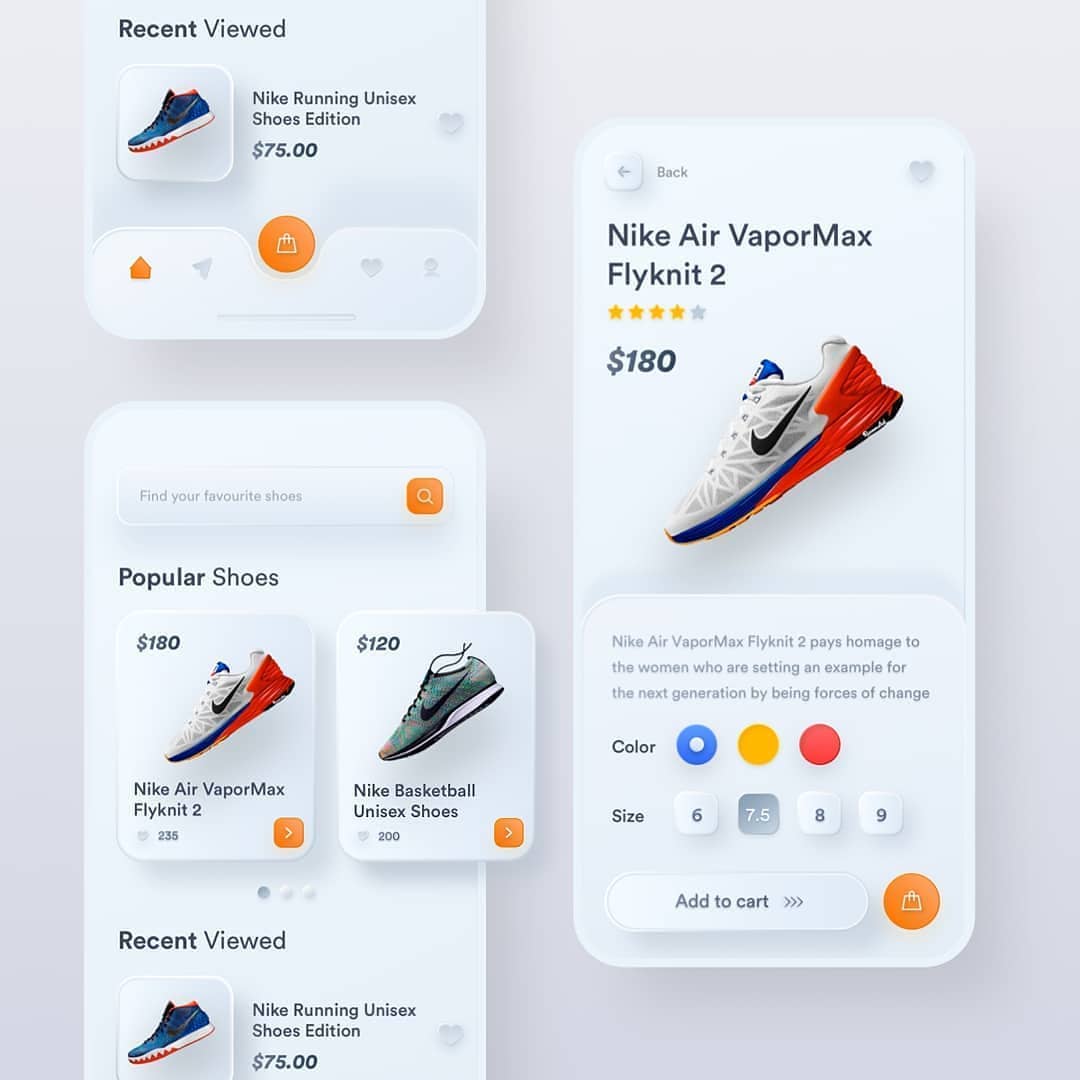Responsive design gained increased popularity and significance after Google updated its rank algorithm to favour mobile-friendly websites in 2015. While it may seem like a new trend, responsive design has been around for quite a while. In fact, although the first website with an adaptive layout was made in 2002, it was only in 2010 that the term responsive web design was officially coined by Ethan Marcotte, an independent web developer. He was writing a book on the subject at the time.
Since then, mobile device usage has increased dramatically. A growing number of people are turning to their tablets and smartphones not just to make calls and send texts but also to check their emails, browse the internet, and so on. So, it’s likely that responsive design will remain an essential trend for the foreseeable future.
All facts considered, it appears that responsive web design is here to stay and has several advantages. In this article, you’ll learn about the features and benefits of responsive web design, and how your website or business will benefit from implementing it.
Elements of responsive web design
Responsive web design is based on several core principles that all designers, frameworks, and content management systems adhere to.
Fluid grids
Responsive design is built on fluid grids. The grids allow designers to align elements onto a web page in a visually appealing fashion, and have them follow a specific order. They are scalable, i.e., their overall size will change in response to the user’s screen, and so will their contents. The first responsive grids were simple, meant to help both designers and developers implement basic web page layouts. Since that time, a variety of responsive CSS frameworks have been introduced, and all are based on fluid grids. CSS also supports native networks through the CSS grid layout module. Browser support is relatively common and opens vast possibilities for designers seeking to explore fluid, responsive layouts without frameworks.
Media queries
Media queries were first developed in the 2000s. However, it wasn’t until 2012 that they were recommended by the W3 Consortium. Like fluid grids, media queries are a fundamental component of responsive design that enables a website to collect the data needed to identify viewport size. The data allows it to load CSS style sheets appropriate- for that particular screen size.
Responsive images and media
Responsive web design works quite well when you’re dealing with text. Unfortunately, the modern website includes several other media files such as videos and photos, and they can be tricky. The best way to make images and other media files responsive is to use the max-width property instead of file dimensions. Once those properties are added to your CSS code, all the media files and images will adapt to the browser window, and they will not exceed their containers.
Benefits of responsive website design
There are several benefits to responsive website design. It will improve your search engine rankings, conversion rates, user experience, and several other aspects of your business that contribute to growth. Here are the most significant benefits of responsive website design.
Enhanced user experience
A responsive website guarantees improved user experience. One of the critical factors for measuring how much users enjoy using any internet resource is the time they spend on it. If they can’t navigate or use a particular site because it forces them to regularly pinch and zoom, they won’t stay. However, if your website scales automatically and quickly adapts to all changes in screen size, then visitors will have no trouble accessing buttons, links, and forms. As a result, they will have a better experience, and it’s more likely that they’ll come back. Improved user experience will also increase your number of “word of mouth” referrals and bring new customers to your business.
Increased mobile traffic
Studies have found that over half of all the world’s internet traffic comes from mobile devices. This alone is proof that you cannot afford to ignore responsive website design. Start by assessing how many people browse your website on mobile devices and how much time they spend on your site. Then, add responsive design and compare the figures. Once your website adapts to viewport width, you will notice an increment in mobile visits accompanied by increased engagement.
Faster web development
A few years ago, it was common to build a separate mobile version of your leading site for smaller devices. This led to increased costs and delays in development because developers had to create two websites instead of one. A responsive website eliminates the need for a second website.
Easy maintenance
With two iterations of your website, your content development teams and website administrators must divide their time. On the other hand, a responsive website needs less maintenance, so your staff has more time to do marketing, split testing, and content development.
Fewer penalties
Another point to note is that having two versions of the same website will force you to create duplicate content. Although search engines are growing wiser each day, they still need to know which version of your website is more important. Since both versions of your website will have similar content, they will be penalized with reduced ranking. To get the best rankings for the two versions of your website, you will need to develop unique SEO strategies and content for each one, and it will cost a lot more.
Website administrators avoid this challenge by using the canonical tag on their mobile site to point to the desktop version. The unintentional result is that mobile websites aren’t ranked by search engines at all. You can avoid all these problems with a responsive website.
Easier website analytics
When you have two separate versions of a website, you need two different analytical dashboards to track incoming traffic, user engagement levels, and so on. With a responsive site, you only have to deal with a single data set, so everything is simplified. You’ll get accurate insights into which devices and browsers your audience is using regardless of whether they are on mobile or desktop devices.
Reduced loading times
Responsive websites typically load faster than those which aren’t on all devices. This is particularly true for tablets and smartphones. Due to fluid grids and responsive images, pages require less time to load, and this has a direct positive benefit on user engagement. Research shows that more than half of all mobile visitors will abandon a website if its pages take more than 3 seconds to load. The same study also finds that in addition to increased user engagement, fast-loading sites enjoy higher conversion rates. This means they are more effective at getting users to complete desirable actions like subscribing, making purchases or filling forms.
Lower bounce rates
Bounce rate is a statistic that shows the proportion of visitors who leave a website after viewing a single page. High bounce rates indicate bad user experience and often lead to diminished search engine rankings. As mentioned before, a responsive website will encourage visitors to stay longer, thereby reducing your bounce rate. Your audience will be more inclined to read and click through other pages on your site so they can see all that it has to offer.
Better search engine optimization
Another benefit of responsive website design is enhanced search engine rankings. Starting in 2015, Google considers website responsiveness as a ranking factor. Consequently, if a website isn’t responsive, its indexing software will place it lower than its mobile-optimized competitors.
Social media shares
Done the right way, responsive design will encourage users to share your content on social media. Responsive content and social sharing buttons ease the process of link sharing even on devices with small screens. This will improve credibility and, at the same time, expose your organization to a new audience, which will then lead to more traffic and conversions.
Better backlinks
It is also worth noting that a responsive website will help you get quality backlinks. Backlinks are an important part of search engine optimization because they’re considered proof that other websites consider your site a source of reliable information. If your website is not optimized for mobile viewing, other websites will be less likely to link to you. Pointing users to a website that offers a poor experience will make them seem unprofessional and untrustworthy.
With a nearly 70% share in the search engine market, when Google speaks, marketers listen. Google states that responsive website design is a recommended configuration, and even goes as far as to designate responsive design as a standard practice.
This is because, as mentioned earlier, responsive websites have one URL and similar HTML code, irrespective of the device. This makes it easier for Google to index, crawl, and organize content. In contrast, a separate site will have different HTML from its desktop version, forcing Google to crawl multiple versions of the same site. In addition, Google prefers responsive websites because that content lives on URL, making it easier for share, create links, and interact.
As the number of internet-capable devices continues to grow, the study and application of responsive design will only continue to expand. While it is convenient to assume that all the advantages of responsive design have been established, it’s likely that the field is in its infancy, so there’s more coming. People can now browse the web through virtual reality headsets, and smartphones have enabled the creation of new applications like augmented reality games. So there are plenty of new opportunities moving forward.
The future advantages of responsive design will probably include a further reduction in the costs of maintenance, continued search engine optimization, and so on. The most recent advancements in responsive design are geared towards smaller screens, and this trend looks set to continue. That said, it is also important to consider larger screens, so everyone has a similar experience.
As you have learned, there are several benefits to responsive website design. If your website is not responsive, planning a new design with a responsive layout is a good first step. Besides the benefits mentioned above, it will help you decide which page elements are more important, the pages that should be eliminated, and how much content you want to keep on your website. Once you’re certain of the direction of your redesign, you should choose the appropriate web hosting company and content management system for your website, then implement the advice outlined in this article to ensure you achieve enhanced engagement rates, conversion rates, and Search engine rankings. If you need professional help, there are several digital agencies with web developers in Uganda. They offer high-quality services and will be willing to address any other concerns you may have.
 +256 206 300885
+256 206 300885


